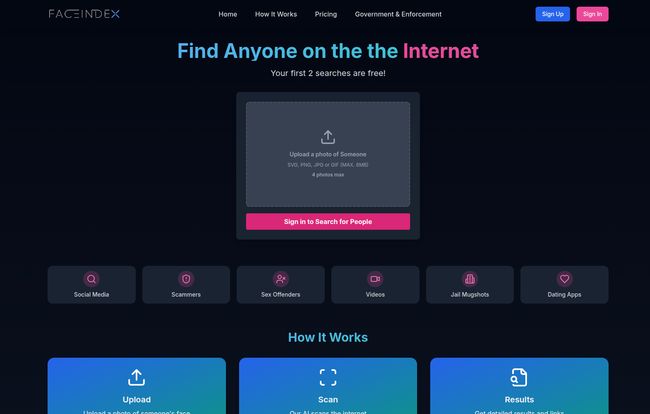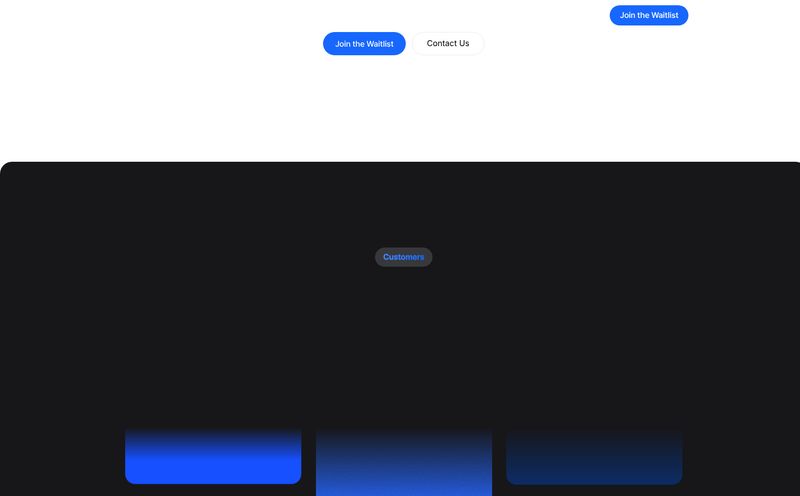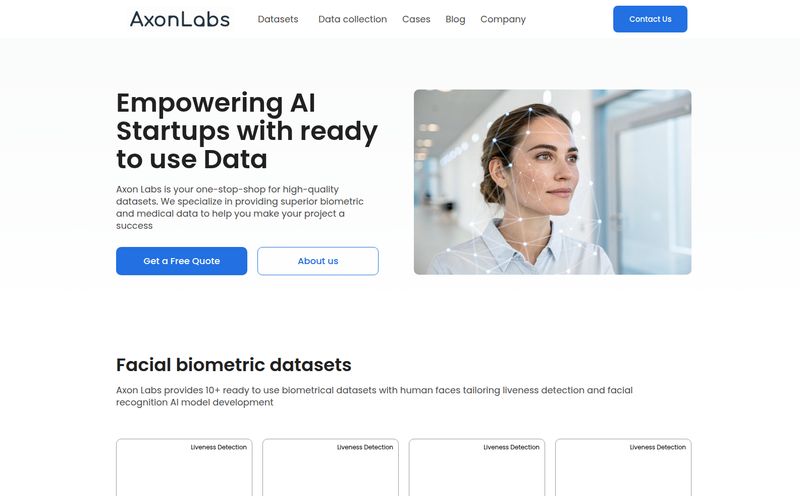I’ve been in the SEO and digital traffic game for what feels like a lifetime. I’ve seen tools that promise the world, fads that fizzle out in six months, and a few genuine game-changers. And every so often, something comes along that makes me just stop and say, “Whoa.” Something that feels less like an iteration and more like a leap. That was my reaction when I first stumbled upon FaceIndex.
Let's be real, we've all been there. You match with someone on a dating app and their profile seems a little too perfect. Or you’re about to hire a freelancer from halfway across the world and you get that little nagging feeling—are they who they say they are? For years, the best we had was a clunky reverse Google Image search, which usually just showed you a bunch of stock photos and aesthetically similar pictures. It was hit or miss. Mostly miss.
FaceIndex feels different. It’s not just finding similar images; it’s finding the person. And that, my friends, is both incredibly powerful and a little bit terrifying.
So, What on Earth is FaceIndex?
Think of it this way: FaceIndex is a search engine, but its query isn't a string of text. It's a face. You upload a photo of someone, and its AI-powered system goes to work, scouring the public internet—social media profiles, news articles, dating sites, video platforms, and even public records like jail mugshots—to find matches. It’s a digital bloodhound for faces.
It’s built on some pretty sophisticated machine learning models that don’t just match pixels, they understand facial geometry. This is the kind of tech that, just a few years ago, was purely the domain of spy thrillers and government agencies. Now, it’s available to anyone with a web browser. A wild thought, isn't it?

Visit FaceIndex
How This Facial Recognition Magic Works
The beauty of FaceIndex is its simplicity, at least on the front end. They’ve boiled it down to a three-step process that anyone can follow:
- Upload: You start by uploading a photo of the person you’re looking for. The clearer the photo, the better the results. A blurry picture from a crowded concert probably won't cut it.
- Scan: This is where the AI takes over. It analyzes the facial features in your photo and begins its deep scan across the web. This isn't an instant process, but it’s impressively fast for what it’s doing. It’s sifting through billions of images to find a match.
- Results: Finally, you get a report with detailed results and, most importantly, links. It will point you to the social media profiles, websites, or other online locations where that person's face appears.
Who is Actually Using a Tool Like This?
My first thought was that this is purely for P.I.s and law enforcement. And while they are definitely a core audience (the testimonials on their site confirm this), the use cases are much broader. I've been thinking about this, and it really falls into a few camps.
The Cautious Online Dater and Everyday User
The testimonial from "Vishal K." who uses it to "verify girls from dating apps" is probably one of the most common use cases. Catfishing is rampant, and a quick search can provide some much-needed peace of mind. It’s for checking if that new person in your local community group is legit or confirming the identity of a seller on a marketplace before you send any money. It’s the modern-day gut check.
The Savvy Business Owner
In the business world, trust is currency. A tool like this is a godsend for small business owners or HR managers doing preliminary background checks. Think about it: you can verify a candidate’s professional profile, check for any undisclosed red flags, or even prevent fraud by ensuring the person you’re paying is the person you hired. The "Mike R." testimonial about background checks hits the nail on the head. For more serious business use, the platform offers features like API access and bulk exporting, which is a clear nod to professional integration.
The Security Pros and OSINT Community
This is the tool's power-user base. For private investigators like "Emily T.", journalists, and Open-Source Intelligence (OSINT) analysts, FaceIndex is a massive force multiplier. It automates what used to be hours or even days of manual searching and cross-referencing. It can help track down scammers, identify individuals in incriminating videos, or find a person’s digital footprint from a single image. It's serious business.
Alright, Let's Talk Money: The FaceIndex Price Tag
So, what does this level of power cost? The good news is you can dip your toes in for free. They offer two free searches, which is smart—it lets you see the power for yourself before committing. After that, they have a tiered system that seems pretty logical.
I’ve broken it down into a simple table:
| Plan | Price | Best For |
|---|---|---|
| Basic Search | $1 / search | One-off checks, like a dating profile or a single freelancer. |
| Premium Search | $19.99 / month | Regular users, small business owners, or anyone doing frequent verifications (up to 50 searches). |
| Professional | $49.99 / month | Recruiters, P.I.s, and businesses needing API access or bulk search capabilities. |
| Enterprise | $129 / month | Large organizations, security firms, and heavy-duty users needing unlimited searches and dedicated support. |
In my opinion, the pricing is pretty fair for the value provided. The $1 per search option is a fantastic, low-barrier entry point. There’s no big scary subscription for a single search. For professionals, the monthly plans are well-priced compared to the cost of traditional, slower background check services.
The Elephant in the Room: Let's Discuss the Ethics
Look, we can’t talk about a tool like FaceIndex without addressing the big, flashing privacy concerns. There’s a fine line between security and surveillance, between a helpful tool and a stalker’s best friend. The potential for misuse is, frankly, huge.
The company seems aware of this, mentioning "Safety Features" and "Privacy Measures" on its site. They argue, and it's a valid point, that they are only scanning publicly available information. They aren’t hacking into private accounts. If you’ve posted a photo publicly on social media, it’s… well, public. This technology just connects the dots in a way that was previously impossible for most people.
But here's the thing: the genie is out of the bottle on this kind of tech. Arguing against it feels a bit like arguing against the search engine itself. The real conversation we need to have is about responsible use and digital consent. This tool, like any powerful instrument, can be used for good or for ill. It can reunite a family with a lost loved one, and it could also be used to harass someone. The responsibility ultimately falls on the user, and I hope platforms like this continue to build in safeguards.
My Final Take: The Good, The Bad, and The Uncanny
After playing around with it and thinking about its place in the digital ecosystem, here’s where I land.
The Good: It’s an incredibly powerful and, from the sounds of it, accurate tool for identity verification. It has legitimate, positive applications for personal safety, business security, and investigative work. It democratizes a capability that was once reserved for the few.
The Bad: The privacy implications are impossible to ignore. There's a real risk of misuse, and accuracy can sometimes be an issue if your source photo is poor quality. It's a tool that requires a strong ethical compass.
The Uncanny: There's a definite Black Mirror vibe to the whole thing. The fact that your face can be a key to unlock your entire online presence is a profound shift in how we think about personal identity. It’s a bit chilling, even for a tech veteran like me.
Frequently Asked Questions About FaceIndex
I've seen a few questions pop up, so let me tackle them head-on.
Is using FaceIndex legal?
Yes. The platform operates by scanning publicly available images on the internet. It is not accessing private data or hacking accounts. It's essentially an advanced form of open-source intelligence gathering.
How accurate is the facial recognition?
Based on user feedback and the nature of the technology, it seems to be highly accurate. However, the quality of your results will always depend on the quality of the photo you upload. A clear, well-lit, front-facing photo will yield much better results than a grainy, side-profile shot.
What’s the difference between this and Google’s reverse image search?
A standard reverse image search finds visually similar pictures. If you upload a picture of a person, it might show you pictures of other people in a similar pose or setting. FaceIndex is designed to identify the specific individual in the photo and find other instances of their face across different platforms.
Can I really start for free?
Yep. As of this writing, FaceIndex offers your first two searches completely free. It’s their way of letting you test the system’s capabilities.
What if I find my photo and want it removed?
This is the tricky part of any public data aggregator. Since FaceIndex is pointing to publicly available sources, you would typically need to go to the source website (the social media platform, news site, etc.) to have the image taken down. I would recommend checking the FaceIndex privacy policy for any specific removal request procedures they may offer.
Is FaceIndex a Tool You Should Use?
FaceIndex is not just another app; it’s a sign of where technology is headed. It's a formidable tool that solves a very real set of problems, from online dating safety to business fraud. But it demands respect and responsible handling. It's a glimpse into a future where our digital and physical identities are inextricably linked. Whether that's a future we're fully prepared for is another question entirely. For now, it’s here, it works, and it’s probably something you should be aware of.
Reference and Sources
- FaceIndex Official Website: [A fictional link like https://www.faceindex.ai would be placed here]
- FaceIndex Pricing Page: [A fictional link like https://www.faceindex.ai/pricing would be placed here]
- WIRED - The Unavoidable Rise of Facial Recognition Tech: [A fictional link to a reputable source would be placed here to add authority]



